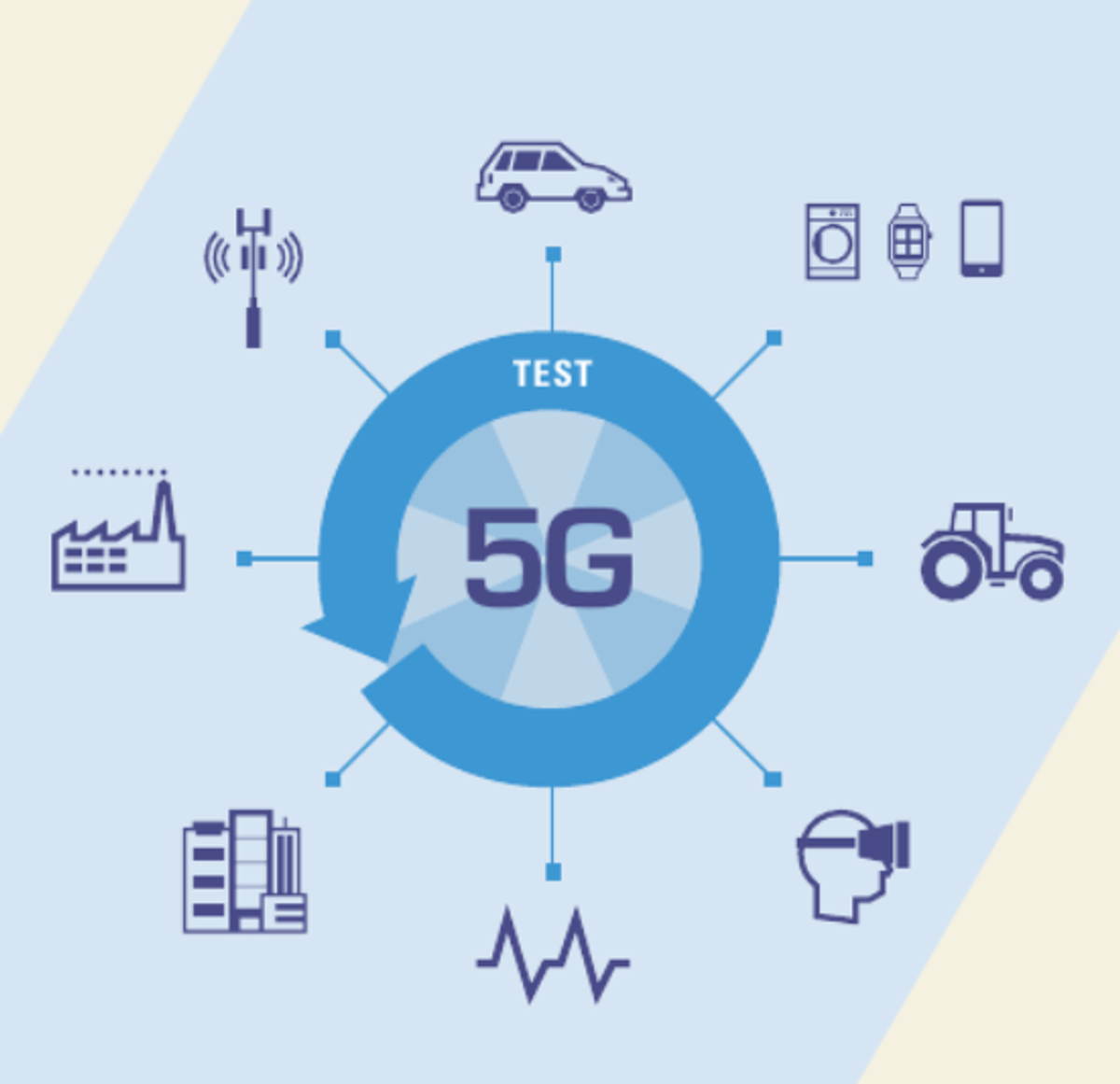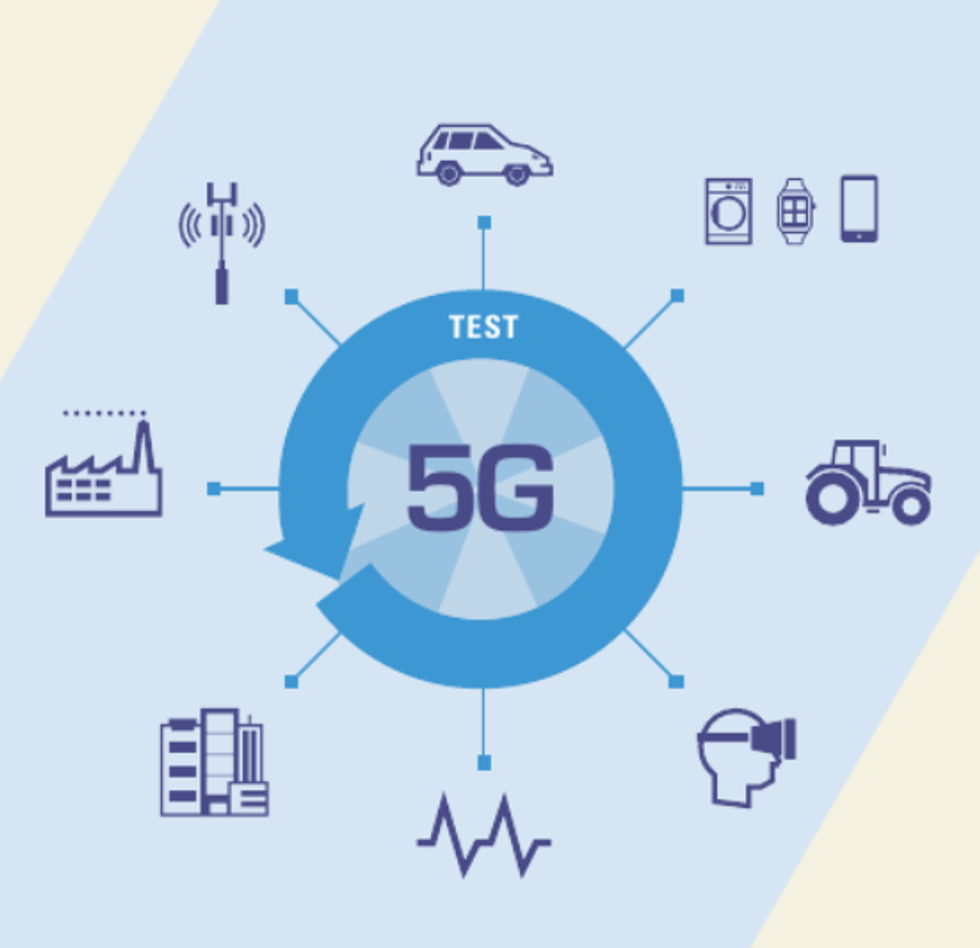5G signifies a generational transformation that will profoundly impact businesses and consumers across the globe. It promises a revolutionary untethered experience with much faster data, shorter network response times (lower latency), instant access anywhere and everywhere, and the capacity for billions of devices. We’re not just talking about being able to download a video to your phone faster. Unlike 3G and 4G, 5G looks to expand far beyond our mobile devices and into applications that touch all facets of our lives. From enabling the Industrial Internet of Things to ensuring the safety of autonomous vehicles, 5G will change our lives in ways that are hard to even imagine.
“Ten years from now, we’re going to look back and say that 5G was one of the most important pieces of technology ever. It enables everything we see today that’s emerging, whether it’s self-driving cars that talk to each other or just having the most amazing video experience.” —Patrick Moorhead, President and Principal Analyst, Moor Insights and Strategy
The Road to 5G
The 3GPP standardization body is furiously marching toward defining 5G, but the real work is just beginning. Companies specializing in semiconductor, network infrastructure, cloud, software, manufacturing, and test technologies must now design, develop, test, and deliver solutions that take advantage of these new wireless capabilities. This is no easy task.
5G features new technologies such as Massive MIMO and mmWave. Both technologies use multiple antennas and beamforming, which is a huge departure from current and previous wireless architectures. 5G also includes new wireless control mechanisms that split the control and data to facilitate the concept of network slicing, which scales the level of service to an individual user device.
In addition, the standards proposed for 5G are far more complex than 3G and 4G standards. 5G will transform our networks, so the industry must transform the way these systems are designed, developed, and tested. For algorithm design, simply modeling systems without any real-world validation has not been enough for an idea to advance from concept to production. For test, traditional methods that focus on an individual component will not be able to account for the overall impact to the system.
A Platform-Based Approach
Wireless researchers across the world quickly discovered that the only path to success is via a platform-based approach to 5G with software at the core. Nokia introduced the first mmWave 5G prototype at 73 GHz and broke the record for mobile access data rates using mmWave spectrum. Lund University developed the first Massive MIMO prototype, and researchers at the University of Bristol and Facebook extended their Massive MIMO prototypes to achieve unprecedented spectrum efficiency milestones.
These system prototypes have already played an important part in the 5G technology evolution. The platform-based design approach used in these examples takes full advantage of software defined radios (SDRs) to tackle system challenges and reduce time to results. SDRs for design and prototyping will continue to evolve as the software changes. We can even envision more capable SDRs with software extending beyond the physical layer to leverage the vast ecosystem of open source software. This will enable researchers to address both the upper layers and the network to further decrease time to adoption and shatter the siloed approach to design.
5G Innovation Doesn’t Stop at Design
Test and measurement solutions will be key in the commercialization cycle. Test systems must expand beyond the physical layer to quickly and costefficiently test these new multiantenna technologies with controllable/steerable beams. Additionally, these systems must address the new mmWave-capable devices with extremely wide bandwidths. These test solutions must not only be able to test the important parameters of a device but also be cost-effective for 5G to reach its potential and achieve widespread adoption.
With these characteristics, 5G requires a different approach to test for wireless devices and systems. For example, system-level over-the-air (OTA) test must become standard in the 5G ecosystem. OTA test presents several challenges but perhaps the most daunting pertains to the environment in which the test equipment and the device under test must coexist. Air is an unpredictable medium, and the channel itself varies over time and environmental conditions. Wireless test engineers must isolate the channel in the OTA scenario and control the device on a per beam basis to effectively “test” the device.
In addition, companies like Intel have introduced early phased array antenna modules featuring an antenna attached directly to the RF front end to minimize system losses. Because access to the device is limited, the test equipment must step up in frequency to the mmWave bands and characterize key performance metrics beam by beam.
Finally, whereas bandwidth is a familiar test challenge, the tested bandwidth of 5G is expected to increase by 50X over a standard LTE channel. At these bandwidths, test systems must not only generate and acquire wider bandwidth waveforms but also process all that data in real time.
What’s Next
Wireless researchers have embraced a platform design approach using SDRs to expedite the early research phase of 5G, and they have delivered. Now, test solution providers must do the same. 5G presents a paradigm shift the likes of which we’ve never seen before, and a platform-based approach that is flexible and software configurable will be essential to the development of this ecosystem.




